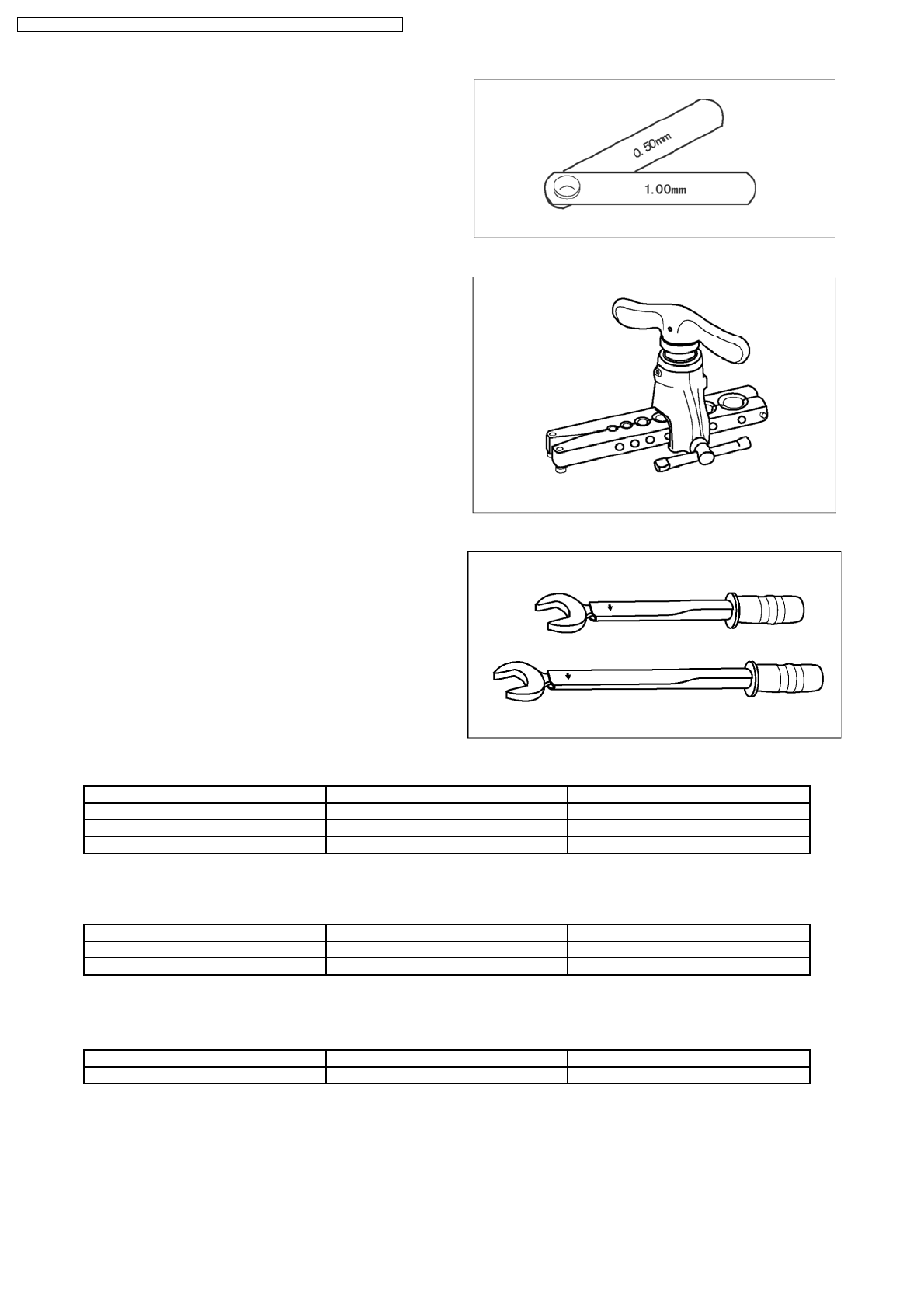
10.2.2. R410A Tools
1. Copper tube gauge for clearance adjustment
(used when flaring with the conventional flaring tool (clutch
type))
• This gauge makes it easy to set the clearance for the
copper tube to 1.0-1.5 mm from the clamp bar of the
flaring tool.
2. Flaring tool (clutch type)
• In the R410A flaring tool, the receiving hole for the
clamp bar is enlarged so the clearance from the clamp
bar can be set to 0-0.5 mm, and the spring inside the
tool is strengthened to increase the strength of the pipe-
expanding torque. This flaring tools can also be used
with R22 piping, so we recommend that you select it if
you are buying a new flaring tool.
3. Torque wrenches
4. Manifold gauge
Fig. 1 Copper tube gauge for clearance adjustment
Fig. 2 Flaring tool (clutch type)
Fig. 3 Torque wrenches
Table 5
Conventional wrenches R410A wrenches
For 1/4 (opposite side x torque) 17 mm x 18 N.m (180 kgf.cm) 17 mm x 18 N.m (180 kgf.cm)
For 3/8 (opposite side x torque) 22 mm x 42 N.m (420 kgf.cm) 22 mm x 42 N.m (420 kgf.cm)
For 1/2 (opposite side x torque) 24 mm x 55 N.m (550 kgf.cm) 26 mm x 55 N.m (550 kgf.cm)
• Because the pressure is higher for the R410A type, the conventional type cannot be used.
Table 6 Difference between R410A and conventional high / low-pressure gauges
Conventional gauges R410A gauges
High-pressure gauge (red) -76 cmHg - 35 kgf/cm
3
-0.1 - 5.3 Mpa -76 cmHg - 53 kgf/cm
3
Low-pressure gauge (blue) -76 cmHg - 17 kgf/cm
3
-0.1 - 3.8 Mpa -76 cmHg - 38 kgf/cm
3
• The shape of the manifold ports has been changed to prevent the possibility of mistakenly charging with another type of
refrigerant.
Table 7 Difference between R410A and conventional manifold port size
Conventional gauges R410A gauges
Port size 7/16 UNF 20 threads 1/2 UNF 20 threads
44
CS-E15DB4EW CU-E15DBE / CS-E18DB4EW CU-E18DBE / CS-E21DB4ES CU-E21DBE


















